
views
- You may be aromantic if you feel little to no romantic attraction for others, don’t desire a romantic relationship, or don’t get crushes often or ever.
- One sub-identity that exists on the aromantic spectrum is demiromantic, which is someone who often only feels romantic attraction once they’ve formed a close bond with someone.
- Another sub-identity is grayromantic, which describes someone who might feel romantic attraction rarely or under very specific circumstances, such as only with friends.
What is an aromantic?

An aromantic often feels little to no romantic attraction for others. The term “aromantic,” or “aro” for short, is an umbrella label for people who usually don’t experience romantic attraction or only feel romantic attraction under specific circumstances. The word “aromantic” encompasses the entire aromantic spectrum, and there are lots of sub-identities that exist along this spectrum. The opposite of aromantic is alloromantic, which describes a person who does experience romantic attraction. If you think you may be aromantic, take the “Am I Aromantic” wikiHow quiz to see where you fall on this spectrum.
Sub-Identities on the Aromantic Spectrum

Grayromantic A gray aromantic, or grayromantic, is someone who might rarely feel romantic attraction or may only feel a weak romantic attraction for others. This term also refers to aromantics who feel romantic attraction only under very specific circumstances. For example, someone who’s amicusromantic often only experiences romantic attraction towards people they’re friends with or are platonically attracted to. Someone who is apresromantic usually only feels romantic attraction after they experience a different type of attraction first, such as aesthetic attraction, sensual attraction, or sexual attraction.

Demiromantic Someone who identifies as demiromantic usually only feels romantic attraction once they’ve established a close emotional connection with someone. This can look different from person to person. For example, a demiromantic might only start feeling romantic attraction for their partner after they’ve been together for a few years or after they’ve shared an intimate sexual experience.

Frayromantic Someone who identifies as frayromantic often only experiences romantic attraction when it’s with someone they don’t know or are less familiar with. In some cases, they may lose these feelings of attraction when they start to get to know the other person. Frayromantic is usually considered to be the opposite of demiromantic.

Cupioromantic Someone who identifies as cupioromantic often doesn’t feel any romantic attraction but still wishes to be in a romantic relationship. They may want a relationship for reasons other than romance, such as the passion, intimacy, and exclusivity that come with a romantic relationship.

Bellusromantic Bellusromantics often feel no romantic attraction but show interest in participating in romantic actions. Things like cuddling with someone, going and doing fun activities, or having sex are all things they might enjoy. However, bellusromantics usually don’t want a romantic relationship; just the traditionally romantic gestures. What sets bellusromantics apart from cupioromantics is their desire for a romantic relationship. Cupioromantics often want a romantic relationship but feel no romantic attraction, while bellusormantics usually have no desire to be in a romantic relationship.

Lithromantic A lithromantic is the opposite of a cupioromantic. This term describes a person who feels romantic attraction but doesn’t desire for those feelings to be reciprocated or something like a romantic relationship.
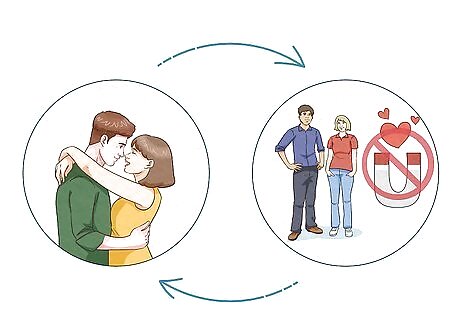
Aroflux The term aroflux can refer to two different phenomena. The first describes a person whose identity fluctuates along the aromantic spectrum. For example, they identify as demiromantic at one point and then cupioromantic at another. The second definition describes someone who fluctuates between being aromantic and alloromantic. In other words, they go between experiencing and not experiencing romantic attraction.

Aegoromantic The term aegoromantic refers to a person who enjoys the idea of romance but usually doesn’t want to participate in romantic activities. Another name for this sub-identity is autochorisromantic. For example, someone who’s aegoromantic might like reading about romance in novels, but they may be uncomfortable with the idea of putting themselves in romantic situations.
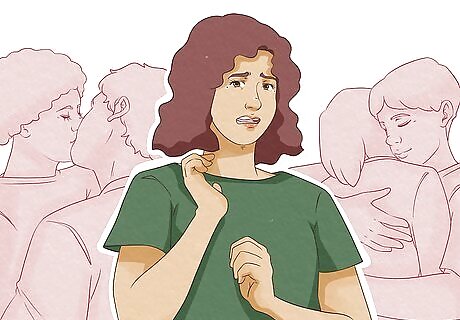
Apothiromantic/Antiromantic These terms describe someone who doesn’t experience any romantic attraction in any shape or form. In many cases, they are repulsed by the idea of romance or romantic attraction.

Recipromantic If someone is recipromantic, they usually only feel romantic attraction if the other person feels romantic attraction for them first. For many recipromantics, they tend to like someone back, but rarely like someone first. For example, they may only start liking someone once the other person admits they have a crush on them.
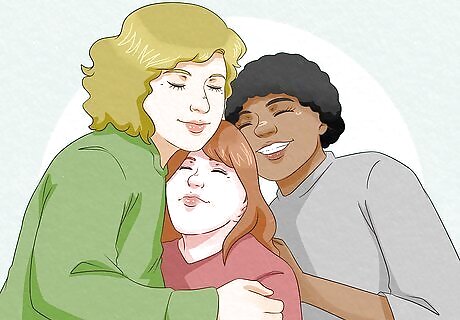
Quoiromantic This sub-identity is also known as WTFromantic, and it describes a person who might not differentiate between romantic attraction, romantic orientation, or romantic vs. platonic feelings. This term also refers to people who might feel frustrated when trying to differentiate between romantic and platonic feelings and are unsure which they’re experiencing. Romantic attraction refers to a person’s desire to be romantically involved with someone. Romantic orientation describes a person’s pattern of romantic attraction based on another person’s gender. For example, someone can be biromantic (attracted to males and females), heteroromantic (attracted to the opposite gender), or homoromantic (attracted to the same gender). Platonic attraction is a desire for friendship or a close relationship with a person that’s not romantic or sexual.
Signs You May be Aromantic

You don’t feel romantic attraction. When you see someone, you might find them good-looking or think that they’re super nice, but you don’t feel any desire to be involved with them romantically. If anything, you might think that they’d be a really cool friend to have. You may feel other types of attraction for a person besides romantic attraction. For example: Aesthetic attraction is a desire to appreciate someone’s physical looks. You might think that they’re really handsome or pretty, but you might not want to be involved with them romantically. Sensual attraction means that you might want to touch or be physically close to someone, but maybe not in a romantic or sexual way. For example, you might just really want to hold the other person’s hand or give them a hug. Sexual attraction is the desire to be involved with someone sexually but maybe not romantically.

You don’t feel the need to be in a romantic relationship. For you, having close friends and a family that loves you might be more than enough. Even if your friends are in romantic relationships, you might not feel any desire to get involved in one yourself and are more than happy to continue with the great friendships you have. You might have been in a romantic relationship before, but you may have just felt like you were playing a role to try and make your partner happy. Instead of a romantic relationship, you might want a queerplatonic relationship. This is often defined as a close relationship between people that’s not necessarily romantic but also goes beyond what people might consider to be a “traditional” friendship.

You might never have had a “crush.” When other people talked about their crushes, you might have felt confused about what that was supposed to mean and feel like. When asked about your crush, you might have just picked out a random person. Or, you may have only felt crushes for celebrities or fictional characters since you knew those could never turn into an actual relationship.

You don’t really relate to romantic stories. When romantic relationships are portrayed in movies, shows, or books, you might feel bored or repulsed by the idea. Or, you might like fictitious stories that involve romance but have no interest in actually pursuing a romantic relationship yourself.

Flirting is somewhat of a foreign concept to you. You may be totally oblivious when someone is trying to flirt with you, and you might not really get what flirting is supposed to look like. You might even have been called out for flirting with someone when you just thought you were having a friendly conversation.
Myths about Aromantics

Aromantics don’t experience love at all. Just because a person doesn’t experience romantic attraction doesn’t mean that they can’t or don’t love others. An aromantic person can still deeply love their friends, family, and even someone they’re in a relationship with. This kind of love just might not be tied to romantic feelings. Along those same lines, just because a person is aromantic doesn’t mean they’re emotionally unavailable. An aromantic person may be very receptive and considerate of others’ emotions, but they just might not be available romantically.

Being aromantic means someone can’t have a relationship. While there are certainly aromantics who don’t wish to pursue an exclusive, romantic relationship, some people who identify as aromantic still might want such a relationship. For example, someone who’s cupioromantic may not feel romantic attraction, but they still might want a romantic relationship for its passion and exclusivity. Some aromantics may just want platonic relationships, while others may want something closer to a queerplatonic relationship (QPR).
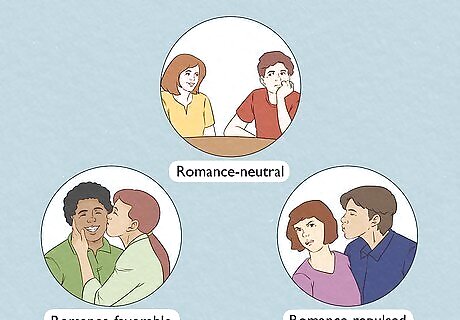
All aromantic people are against romance. Just because someone doesn’t experience romantic attraction doesn’t necessarily mean that they’re totally against it. Even though someone may not feel romantic attraction, they may still be totally okay with seeing or even receiving others’ romantic gestures. There are 3 types of attitudes an aromantic generally may have about romance: Romance-favorable: Someone who chooses to participate in romantic activities and may seek out a romantic relationship regardless of whether or not they feel romantic attraction. Romance-neutral: Someone who neither particularly enjoys nor strongly opposes receiving romantic gestures or doing traditionally “romantic” things. For example, they may be okay with going on dates but may not particularly find them that interesting or fun. Romance-repulsed: Someone who may be disgusted or feel uncomfortable when receiving romantic gestures or viewing media that focuses too much on romance.

Aromantics don’t like physical contact, such as kissing or cuddling. Someone who identifies as aromantic can still enjoy being physically close to others. Even if they don’t feel romantic attraction, they might still enjoy things like cuddling, kissing, holding hands, or even having sex. While they may not feel romantic attraction, they can still feel other types of attraction, such as sensual or sexual attraction.
Aromantic vs. Asexual
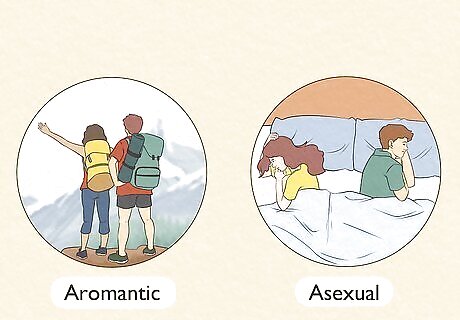
Aromantics feel little to no romantic attraction while asexuals experience little to no sexual attraction. The difference between asexuality and aromanticism is a matter of sexual desire versus romantic desire. Someone who’s aromantic can still feel sexual attraction, and someone who identifies as asexual might still experience romantic attraction. A person who is aromantic asexual, or “aroace” for short, feels little to no romantic or sexual attraction toward others. There are many different combinations of romantic and sexual orientations that exist. For example, someone who is aromantic heterosexual might feel no romantic attraction toward others but may be sexually attracted to people of the opposite gender. Another example would be someone who is demiromantic bisexual, meaning that they are sexually attracted to men and women, but may only feel romantic attraction once they’ve formed a strong emotional connection. The aromantic and asexual communities share many of the same terms when it comes to defining sub-identities. For example, asexual sub-identities such as graysexual, demisexual, and fraysexual all have the same meanings but refer to sexual attraction instead of romantic attraction.
Supporting Someone Who Identifies as Aromantic

Be respectful of their identity. If someone comes out to you as aromantic, thank them for telling you and let them know that you’re there to support them. Don’t question how they know or if they’re sure—just believe them and make an effort to accept them for who they are.
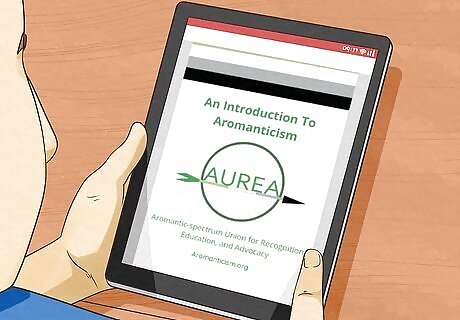
Educate yourself about aromanticism and the aromantic spectrum. Reading this article is definitely a great first step! In order to better understand what the other person is feeling and going through, make an effort to read up on aromanticism and its sub-identities. For example, the site aromanticism.org provides a lot of helpful information about what aromanticism is, a glossary of terms related to aromanticism, and advice for allies in supporting their aromantic friends or family. Read this printable guide from the Aromantic-spectrum Union for Recognition, Education, and Advocacy (AUREA) to learn about how to be an ally to aromantics.

Listen to and read about aromantics’ experiences. If the other person is comfortable with talking about their own experiences as an aromantic, be sure to listen and give them your full attention. In doing so, you might find the opportunity to correct any unconscious biases or stereotypes you had about aromantics, and you may learn about ways you can better support the aromantic community. Join forums and online aromantic communities to read about more people’s experiences. Don’t be afraid to ask questions when you’re curious about something. For example, arocalypse.com is an online forum for people who are aromantic, dating an aromantic person, or simply curious about the aromantic experience. Explore the threads on this site to learn more about aromanticism.

Speak up when someone is being ignorant. A big part of being an ally is stepping up when others make belittling or ignorant comments about the aromantic community. When this happens, correct the person and do your best to educate them. For someone who identifies as aromantic, it can be tiring to have to constantly explain their feelings and experiences, so do your best to take some of the burden off of their shoulders. If the situation becomes confrontational or even dangerous, it’s best to walk away.
















Comments
0 comment